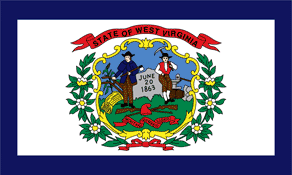West Virginia State Standards for Language Arts: Grade 3

Currently Perma-Bound only has suggested titles for grades K-8 in the Science and Social Studies areas. We are working on expanding this.
WV.RLA.S.3.1. Reading: Students will apply reading skills and strategies to inform, to perform a task and to read for literacy experience by identifying and using grade appropriate essential reading components (phonemic awareness, phonics, vocabulary, fluency, comprehension, and written application) and selecting a wide variety of literature and diverse media to develop independence as readers.
RLA.O.3.1.1. Identify and practice appropriate sight words and content vocabulary.
RLA.O.3.1.2. Identify and understand appropriate reading vocabulary (e.g., synonyms, antonyms, homonyms, multiple-meaning words).
RLA.O.3.1.3. Apply tiered levels of vocabulary in speaking and reading experiences.
RLA.O.3.1.4. Describe a purpose for reading:
RLA.O.3.1.4.a. For information
RLA.O.3.1.4.b. For pleasure
RLA.O.3.1.4.c. To understand a specific viewpoint
RLA.O.3.1.5. Read familiar stories, poems and passages with fluency:
RLA.O.3.1.5.a. Appropriate rate
RLA.O.3.1.5.b. Accuracy
RLA.O.3.1.5.c. Prosody
RLA.O.3.1.6. Use meaning clues to aid comprehension of content across the curriculum (e.g., pictures, picture captions, titles, headings, topic).
RLA.O.3.1.7. Read third grade instructional level texts and use self-correction strategies (e.g., decoding, searching for cues, rereading).
RLA.O.3.1.8. Use literary and informational texts to summarize, determine story elements, determine cause and effect, compare and contrast, paraphrase, infer, predict, sequence, draw conclusions, describe characters, and provide main idea and support details.
RLA.O.3.1.9. Infer the author's purpose:
RLA.O.3.1.9.a. To persuade
RLA.O.3.1.9.b. To entertain
RLA.O.3.1.9.c. To inform in literary and informational text
RLA.O.3.1.10. Compare self to text in making connections between characters or simple events in a literary work with people and events in one's own life and other cultures.
RLA.O.3.1.11. Identify and describe the ways in which language is used in literary text (e.g. simile, metaphor, idioms).
RLA.O.3.1.12. Recognize and explain the defining characteristics of genre in literary and texts:
RLA.O.3.1.12.a. Fairy tales
RLA.O.3.1.12.b. Folk tales
RLA.O.3.1.12.c. Myths
RLA.O.3.1.12.d. Poems
RLA.O.3.1.12.e. Fables
RLA.O.3.1.12.f. Fantasies
RLA.O.3.1.12.g. Biographies
RLA.O.3.1.12.h. Short stories
RLA.O.3.1.12.i. Chapter books
RLA.O.3.1.12.j. Historical fiction
RLA.O.3.1.12.k. Plays
RLA.O.3.1.12.l. Autobiographies
RLA.O.3.1.12.m. Magazines
RLA.O.3.1.12.n. Newspapers
RLA.O.3.1.12.o. Textbooks
RLA.O.3.1.12.p. Electronic databases
RLA.O.3.1.12.q. Reference materials
RLA.O.3.1.13. Use graphic organizers and visualization techniques to interpret information (e.g., charts, graphs, diagrams).
RLA.O.3.1.14. Use reading skills and strategies to understand a variety of information resources to support literacy learning (e.g., written directions, captions, electronic resources, labels, informational text).
RLA.O.3.1.15. Increase the amount of independent reading to build background knowledge, expand vocabulary and comprehend literary and informational text.
WV.RLA.S.3.2 Writing: Students will apply writing skills and strategies to communicate effectively for different purposes by using the writing process applying grammatical and mechanical properties in writing and selecting and evaluating information for research purposes.
RLA.O.3.2.1. Demonstrate proper manuscript and full transition to cursive writing techniques:
RLA.O.3.2.1.a. Posture
RLA.O.3.2.1.b. Paper placement
RLA.O.3.2.1.c. Pencil grip
RLA.O.3.2.1.d. Letter formation
RLA.O.3.2.1.e. Slant
RLA.O.3.2.1.f. Letter size
RLA.O.3.2.1.g. Spacing
RLA.O.3.2.1.h. Rhythm
RLA.O.3.2.1.i. Alignment
RLA.O.3.2.2. Identify and produce a grammatically correct sentence (e.g., correct subject/verb agreement with singular and plural nouns and verbs, correct use of regular and irregular verbs, avoiding run-on sentences and fragments).
RLA.O.3.2.3. Compose a written composition using the five-step writing process:
RLA.O.3.2.3.a. Pre-write
RLA.O.3.2.3.b. Draft
RLA.O.3.2.3.c. Revise
RLA.O.3.2.3.d. Edit
RLA.O.3.2.3.e. Publish
RLA.O.3.2.4. Develop proper paragraph form in written composition:
RLA.O.3.2.4.a. Beginning, middle, end
RLA.O.3.2.4.b. Main ideas with relevant details
RLA.O.3.2.4.c. Sentence variety such as declarative, interrogative and exclamatory and imperative
RLA.O.3.2.4.d. Descriptive and transitional words
RLA.O.3.2.4.e. Indentations
RLA.O.3.2.5. Identify and apply conventions of spelling in written composition (e.g., spell high frequency words from appropriate grade level list, use letter/sound relationships to spell independently, make structural changes to spell words correctly, spell irregular verbs and irregular plural nouns).
RLA.O.3.2.6. Identify and apply conventions of capitalization in written composition (e.g., greeting, heading, closing of a letter, first word of a direct quotation).
RLA.O.3.2.7. Identify and apply conventions of punctuation in written composition (e.g., commas in dates, addresses and greeting/closing of a letter, quotation marks around titles and direct quotations, apostrophes for contractions and possessive nouns).
RLA.O.3.2.8. Produce appropriate grammar in written composition.
RLA.O.3.2.9. Compose in a variety of forms and genres for different audiences (e.g., diaries, journals, letters, reports, stories).
RLA.O.3.2.10. Alphabetize to the third letter and use simple dictionary skills (e.g., guide words, pronunciation).
RLA.O.3.2.11. Select a variety of sources to gather information (e.g., use dictionaries, encyclopedias, newspapers, electronic resources).
RLA.O.3.2.12. Use a variety of strategies to plan simple research (e.g., identify possible topic by brainstorming, list questions, use graphic organizers, organize prior knowledge about a topic, develop a course of action for writing, determine how to locate necessary information).
WV.RLA.S.3.3. Listening, Speaking and Media Literacy: Students will apply listening, speaking and media literacy skills and strategies to communicate with a variety of audiences and for different purposes.
RLA.O.3.3.1. Listen and respond to familiar stories and poems (e.g., summarize and paraphrase to confirm comprehension, recount personal experiences, imagine beyond the literary form).
RLA.O.3.3.2. Distinguish different messages conveyed through visual media (e.g., photos, television, multimedia Internet).
RLA.O.3.3.3. Create an age appropriate media literacy product that reflects understanding of format and characteristics.